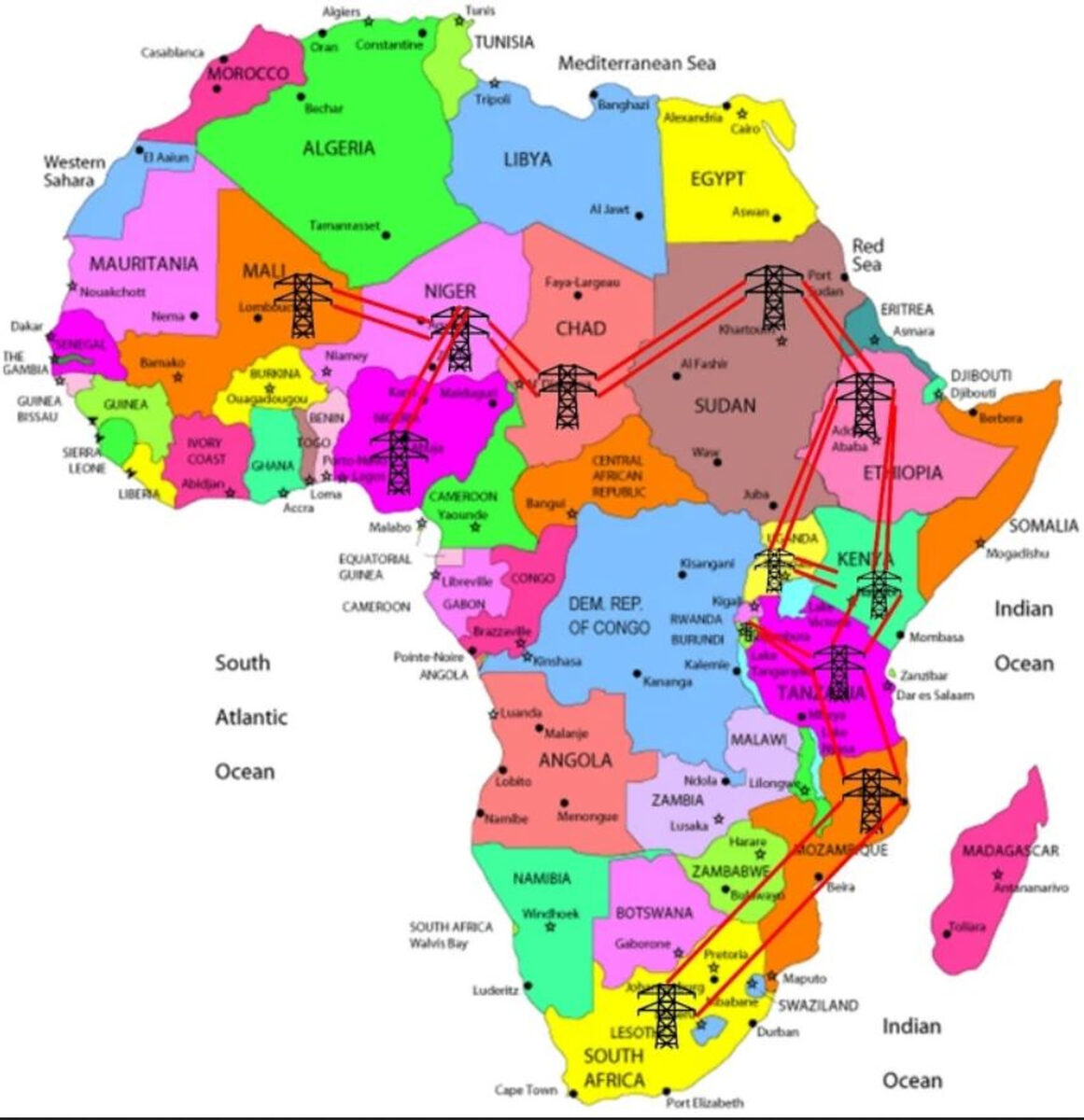An international team of researchers led by the Chengdu University of Technology in China has proposed to build a giant grid across 12 countries of Sub-Sahara Africa (SSA) as one of the fastest, feasible solutions to reduce the continent's chronic energy poverty.
The scientists used the EnergyPLAN simulation software to determine the renewable energy generation capacities, economic costs, and supply strategies needed to balance the projected future electricity demand in SSA, with the proposed new network, by 2040.
They also utilized Matlab software to assess the possibility of integrating electric vehicles and hydrogen production. “The method and model presented in this study can also be adopted by individual countries as well as regions or continents as a solution to energy poverty and a pathway to net-zero emission attainment,” they specified, noting that wind and solar were the only two renewable energy sources resources considered within the scope of the study, with pumped hydro playing a special role for energy storage.
The 12 countries that would be touched by the proposed transmission line are Mali, Niger, Nigeria, Chad, Sudan, Ethiopia, Uganda, Kenya, Tanzania, Burundi, Mozambique, and South Africa. The research group said they chose these countries to follow the grid line and to enhance easy expansion in the future. “The countries have been selected based on data availability, proximity to other countries with sufficient data, land size, and economic status within SSA,” the paper explained.
The academics developed six different scenarios for the years 2030 and 2040, respectively. They estimated an electricity demand for the 12 countries of 678 TWh/year for 2030 and 760 TWh/year for 2040. The average electricity demand is estimated to be 77,186 MW.
Through their modeling, the scientists found that around 665,000 MW of PV deployed in Nigeria, Sudan, Niger, Mali, Chad, Ethiopia, and South Africa may help reduce significantly the energy poverty in SSA by 2030, with the support of pumped hydro storage.
“For the additionally 100 TWh/yr electricity demand in 2040 (800 TWh/yr), the 2030 PV plants capacities will increase by 42,000 MW for Nigeria, 60,000 MW for Sudan and Niger, 80,000 MW for Mali and Chad, 40,000 MW for Ethiopia and 90,000 MW for South Africa,” they noted, adding that Chad, Mali, and Sudan may dominate CSP plant development in the future, due to their enormous solar potential for this specific technology. “To meet the energy demands in 2040, there will be a huge increase in the CSP plants' installation capacities in 2030.”
The researchers found that PV offers the cheapest option in terms of annual investment cost, while wind provides the less expensive solution for total investment cost, which they said makes wind preferable.
They said that to have energy security and achieve decarbonization from electricity production by 2030 or 2040, the ‘Hybrid with High Storage' case scenario is the most viable option, referring to the possibility of high levels of integration between the two renewable energy sources. “It is noteworthy that the RE technologies in this study can be installed centrally or in smaller units in different parts of each country.”
The proposed grid project is presented in the paper “Juxtaposing Sub-Sahara Africa’s energy poverty and renewable energy potential,” published in scientific reports. The research team comprises scientists from the Guangdong University of Petrochemical Technology, the University of Electronic Science and Technology of China, the Cyprus International University, the Chrisland University in Nigeria, and the University of Sharjah in the UAE.
This content is protected by copyright and may not be reused. If you want to cooperate with us and would like to reuse some of our content, please contact: editors@pv-magazine.com.




5 comments
By submitting this form you agree to pv magazine using your data for the purposes of publishing your comment.
Your personal data will only be disclosed or otherwise transmitted to third parties for the purposes of spam filtering or if this is necessary for technical maintenance of the website. Any other transfer to third parties will not take place unless this is justified on the basis of applicable data protection regulations or if pv magazine is legally obliged to do so.
You may revoke this consent at any time with effect for the future, in which case your personal data will be deleted immediately. Otherwise, your data will be deleted if pv magazine has processed your request or the purpose of data storage is fulfilled.
Further information on data privacy can be found in our Data Protection Policy.